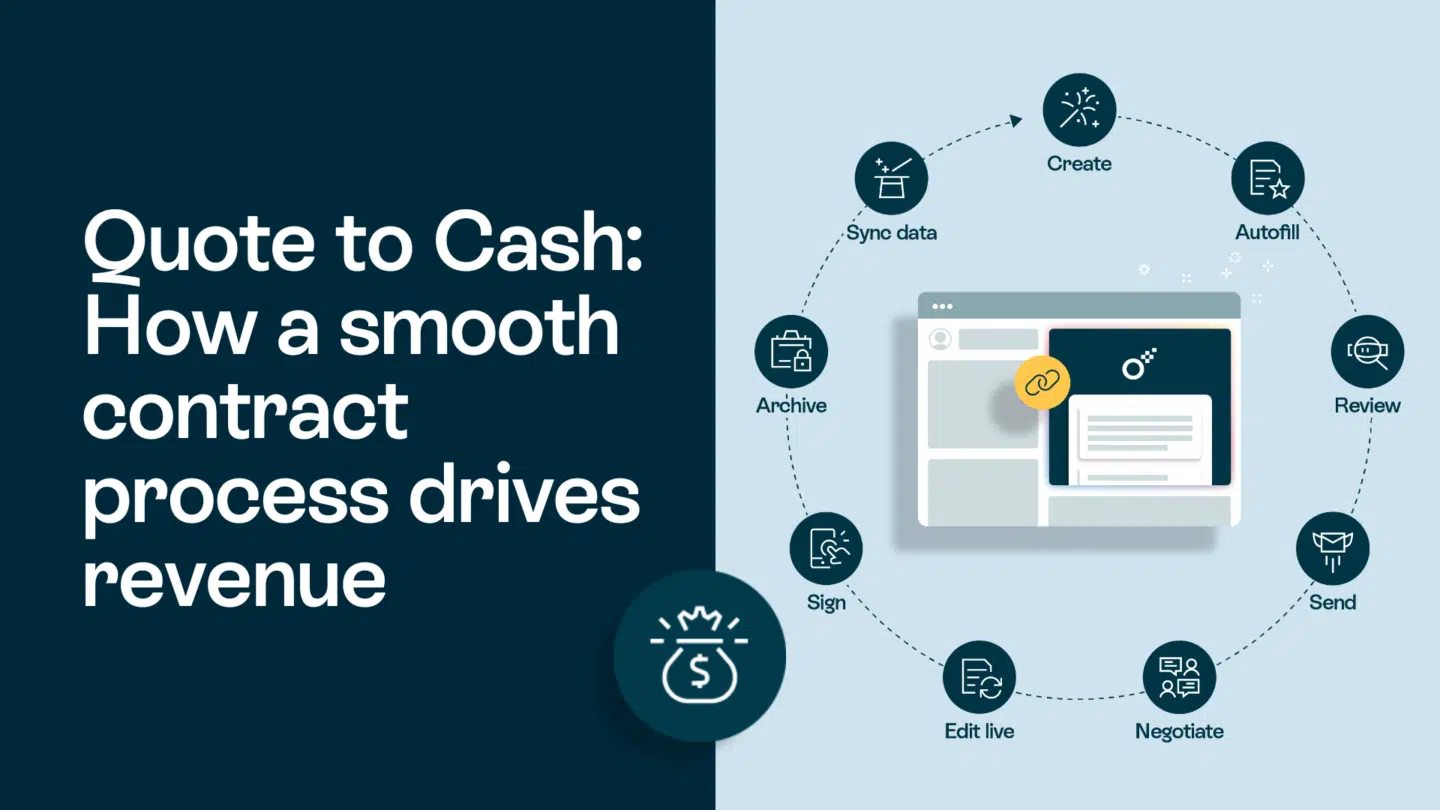You know you want to invest in a contract automation platform—streamlining contract workflows, reducing risks, and improving efficiency. However, securing buy-in from the stakeholders involved in the buying process requires more than just enthusiasm.
You need a structured business case that clearly outlines the value, return on investment (ROI), and strategic fit for your organization.
This guide walks you through how to structure a compelling business case for contract automation using the Oneflow Business Case Playbook as a framework.

1. Executive summary
The executive summary is your elevator pitch. It should concisely outline:
- The problem: Challenges with the current contract process (e.g., inefficiencies, compliance risks, revenue leakage).
- The solution: How a contract automation platform solves these challenges.
- The value proposition: Expected benefits in cost savings, efficiency, and risk reduction.
- The call to action: What decision-makers need to do next.
💡 Pro tip: Keep this section brief and impactful—executives often read this first (and sometimes only).
Read also: What is contract automation? A complete guide
2. Problem statement: Why change is necessary
Clearly define the pain points of your current contract management process. Consider:
- Manual inefficiencies: How much time is spent drafting, negotiating, and approving contracts?
- Compliance risks: Are you missing key contract obligations or renewal deadlines?
- Revenue impact: How much money is lost due to contract errors, bottlenecks, or missed opportunities?
📊 Example: Organizations without contract automation lose an average of 9% of their annual revenue due to poor contract management.
Using data from the Oneflow Business Case Playbook, quantify these problems to highlight the cost of inaction.
3. The solution: Why contract automation?
Explain how a contract automation platform addresses these challenges:
✅ Faster contract cycles – Automates approvals and reduces negotiation times.
✅ Reduced risk & compliance issues – Provides audit trails and automated alerts.
✅ Centralized contract repository – Ensures easy access and visibility for all stakeholders.
✅ Improved revenue capture – Prevents lost deals due to contract inefficiencies.
💡 Pro tip: Showcase examples of companies that have successfully implemented contract automation, demonstrating real-world results.

4. Value analysis & ROI projection
Decision-makers want numbers. Break down the expected financial impact:
- Time savings: Reduce contract processing time by X%.
- Cost reduction: Cut administrative costs by X%.
- Revenue optimization: Improve contract renewal rates by X%.
📊 Example: By automating contracts, companies see a 30–40% reduction in time spent on contract management, saving thousands annually.
Use the Oneflow Value Analysis Framework to calculate the ROI specific to your organization.
5. Implementation timeline & next steps
Stakeholders need clarity on how and when the platform will be implemented. Break it down into phases:
📅 Phase 1: Discovery & vendor selection (1-2 months)
📅 Phase 2: Implementation & integration (3-6 months)
📅 Phase 3: Training & full adoption (Ongoing)
💡 Use the Oneflow Implementation Timeline to visualize this process for stakeholders.
Conclusion
A well-structured business case doesn’t just sell an idea—it provides a roadmap for success. If you want to fast-track your business case, use the Oneflow Business Case Playbook to structure your argument, analyze ROI, and plan implementation.
📥 Use our playbook as your template and start building your business case!









